-
Posts
1,155 -
Joined
-
Last visited
-
Days Won
1
Content Type
Profiles
Forums
Blogs
Gallery
Events
Store
Posts posted by RobW
-
-
And here it is.
It is 41mm in diameter, measured from the widest point of the arms, and has a number of noticeable die differences compared to the others posted. The differences are easier to spot on the reverse. As indicated before the large ball suspender is reminiscent of French manufacture but this has not been confirmed yet.
Regards,
Rob
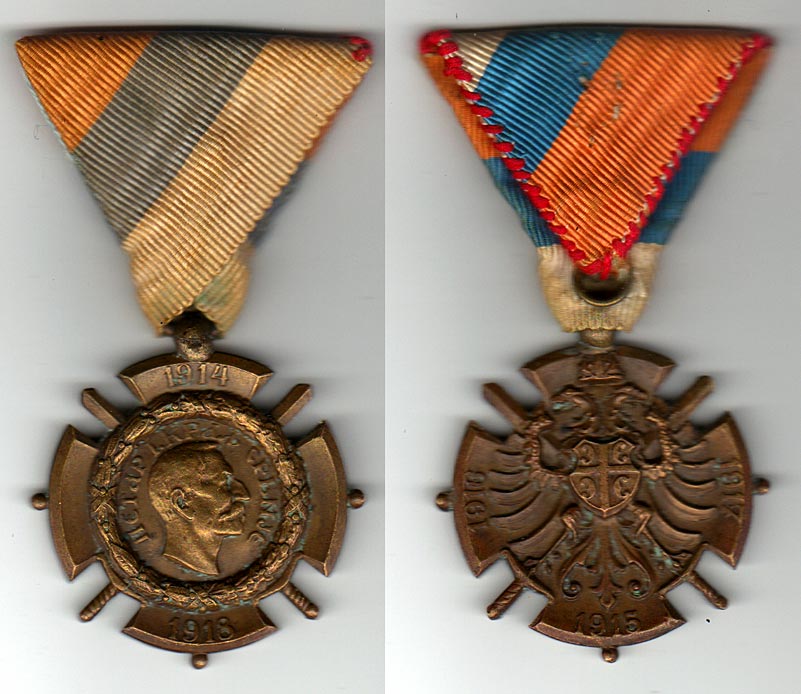 0
0 -
To all,
I added this example to another thread before I realised that this specific thread existed. Here is my lone example. It is part of a French group of 7 that I have.
It has a really lovely patina on the surface of the enamel and is of a nice multi-part construction with the star a separate piece to the encircling wreath. The solder work is quite good and, despite the wreath being off centre, it shows a good standard of construction despite this being a relatively mass-produced item.
The fact that it has a slightly faded ribbon does not bother me and I prefer this to the brand new ribbon look as you can tell the items have been worn.
Regards,
Rob
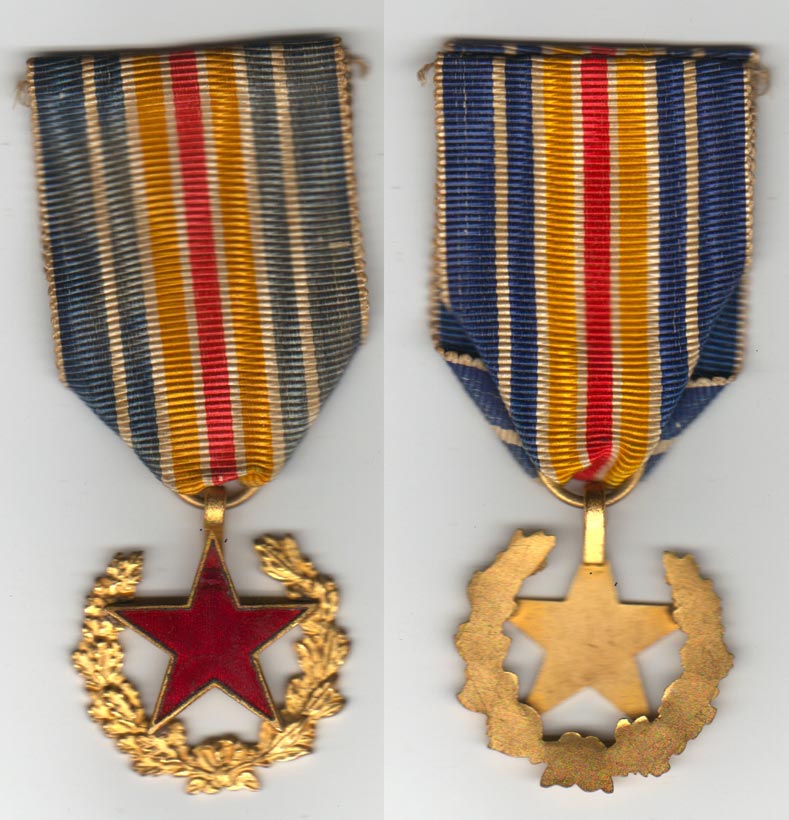 0
0 -
Hello Tim,
Here is my lone example. It is part of a French group of 7 that I have.
It has a really lovely patina on the surface of the enamel and is of a nice multi-part construction with the star a separate piece to the encircling wreath. The solder work is quite good and, despite the wreath being off centre, it shows a good standard of construction despite this being a relatively mass-produced item. The fact that it has a slightly faded ribbon does not bother me and I prefer this to the brand new ribbon look as you can tell the items have been worn.
Regards,
Rob
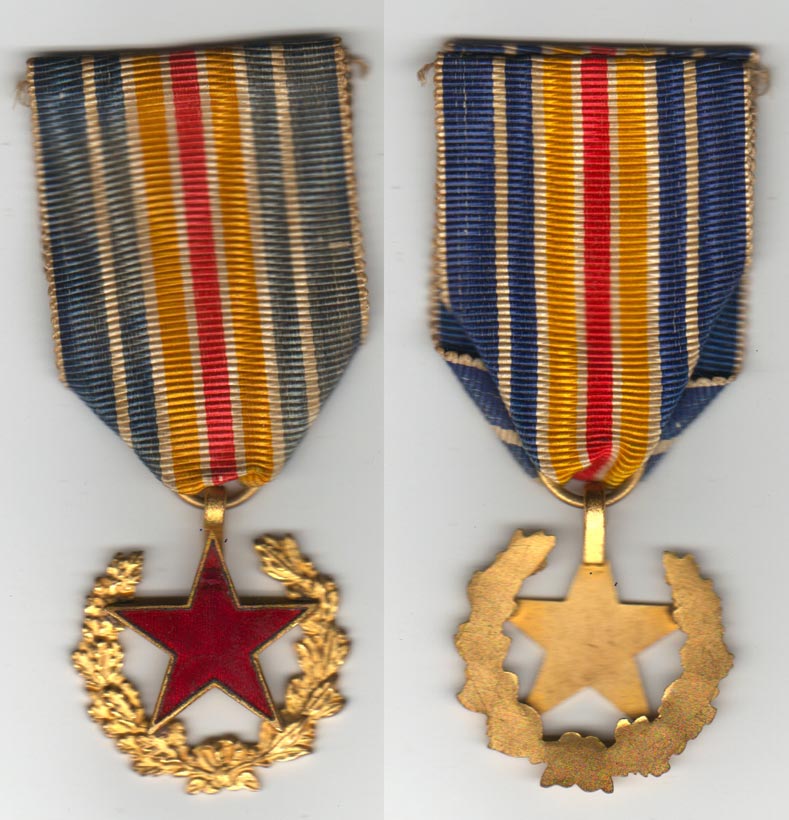 0
0 -
Tim,
The reference books used to obtain this information were:
* Le Medaglie Ufficiali Militari E Civil Del Regno D'Italia, Dimitri Bini, 2008 (Bilingual English-Italian)
* Le Decorazioni Del Regno Di Sardegna E Del Regno D'Italia, Vol II, Costantino Scarpa & Paolo Sézanne, 1985 (Italian only)
Regards,
Rob
0 -
Hello Tim,
Now that I'm back in Sydney and have access to my reference books here is some more details, as indicated, on the medal bars of the Italian-Turkish War medal 1911-12 and the Libia medal.
Italo-Turca Medal.
The only officially approved medal bars for this medal were:
* 1911, 1911-12, 1912
Libia Medal.
There were numerous official bars as well as some unofficial bars. The following long list of official bars were authorised:
* 1912, 1912-13, 1913, Fezzan/1913, 1913-14, Fezzan/1913-14, 1914, Fezzan/1914, 1914-15, 1915, Tripolitania/1915, 1915-16, 1916, 1916-17, 1917, 1917-18, 1918, 1918-19, 1919, 1919-20, 1920, 1920-21, 1921, 1922, 1923, 1924, 1925, 1926, 1927, Tripolitania 1927-1928, 1928, 1929, Tripolitania 1929-1930, 1930, 1931
While this medal was established to recognise service in Libya after the peace treaty of 13 October 1912 (hence the similar dates on bars of both medals), service continued to be recognised within Libya until the onset of World War 2. Subsequent decrees established the granting of bars on the Libia medal until 1931 so bars dated between 1932 and 1940 are considered unofficial. I have pictures of the bars from 1932-1935. There exist single year dated bars from 1932 to 1940.
From a rarity scale the single dated bars are much easier to find than multiple dates with those bars indicating a town and date being the hardest to find.
As a reference I have pics of the following medals with differing date bars:
* Italo-Turca medal - 1911-12, 1912-13, 1913-14, 1914-15, 1915-16, and 1916-17 bars.
* Libia medal - 1913, 1914, 1915, 1916, 1917, 1918, 1919, 1920 and 1921 bars.
* Libia medal - 1914 bar.
* Libia medal - 1925, and 1927 bars.
* Libia medal - 1940 bar.
So while the regulations stated what bars could be worn with what medal it does also appear that veterans wore the bars in the manner they wished. As it is not possible to differentiate the medals by the obverse nor ribbon this could also have been an expedient solution as well.
Hope this helps.
Regards,
Rob
0 -
Hello Rob
Yes, Léon Chalin was a medal maker in Paris. His workshop was 12 rue de Crussol. He was registered from 1895 to 1929.
The other mark (C and L superposed) is assessed to be another Léon Chalin's mark. But I have no clear evidence of that. This is only an assumption.
Regards
Bison
Hello Bison,
Thanks very much for the clarification. That is good information.

It would be good if someone else could add to the mix and confirm this.
Apart from the recent book by Patrick Binet, which shows the relevant makers marks of the Colonial medals, are there any other references available that has some form of listing of the myriad of French manufacturer hallmarks? I have an old copy of 'Court Jewelers of the World' by Jeffrey R. Jacob, dated 1978 which is very useful. While it shows a great many different manufacturer marks it is also incomplete in many areas. It would be advantageous if such an updated book were produced.
Regards,
Rob
0 -
Hello Bison,
Welcome back. Thanks for the input regarding the last War Commemorative medal mark. I have another example with this mark but never noticed that it was merely inverted.
I have also recently been made aware that the examples in posts #27-28 and #32-34 of the thread have another variety of the mark of Léon Chalin. Is this manufacturer Paris based like most of the others?
Regards,
Rob
0 -
To Tim,
I am still searching for my Arthus Bertrand example. It will eventually turn up.
Regards,
Rob
0 -
And the mark itself.
It is a similar external shape to that shown on post #32-34 but there is definitely different internal markings. While it is difficult to tell I believe the central mark resembles an upside down arrow.
I am hopeful that someone more knowledgeable can identify this maker. Any thoughts??
Regards,
Rob
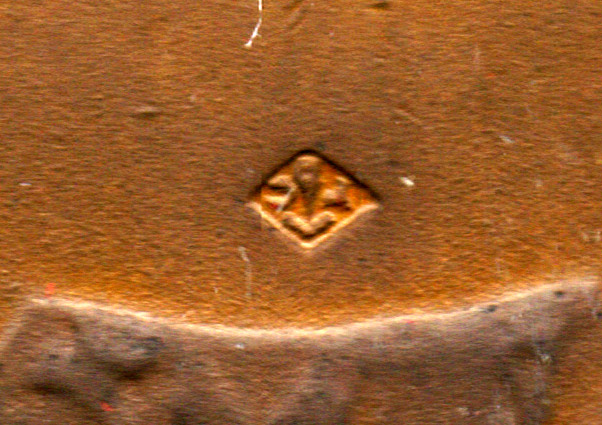 0
0 -
And here is the close-up of the reverse. Note the similar diamond shaped mark.
Regards,
Rob
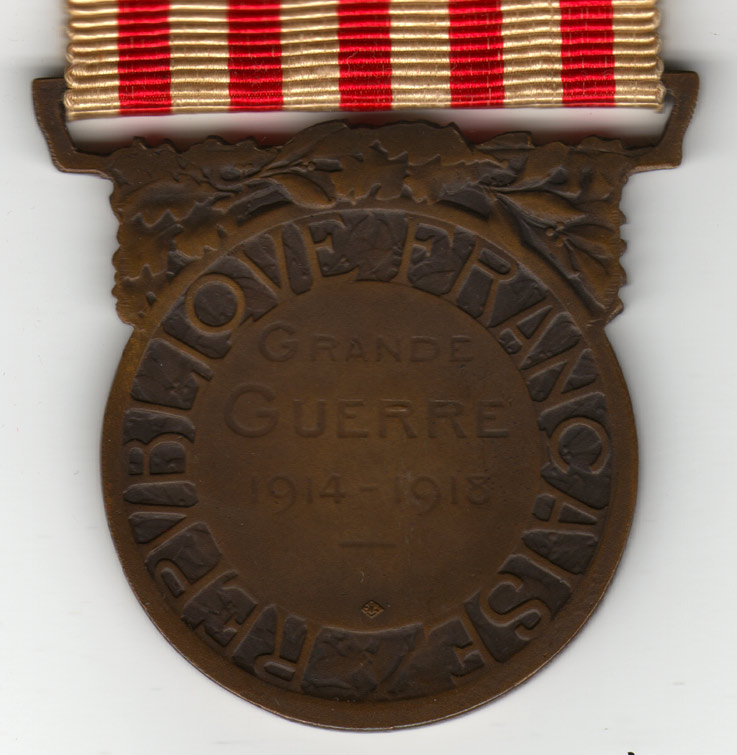 0
0 -
To all,
Here is another French War Commemorative medal with yet a different makers mark on the reverse. It is part of a group of 6 that I have. I only noticed the different mark when I was looking for my Arthus Bertrand marked specimen.
Close-ups of the reverse and mark to follow.
Regards,
Rob
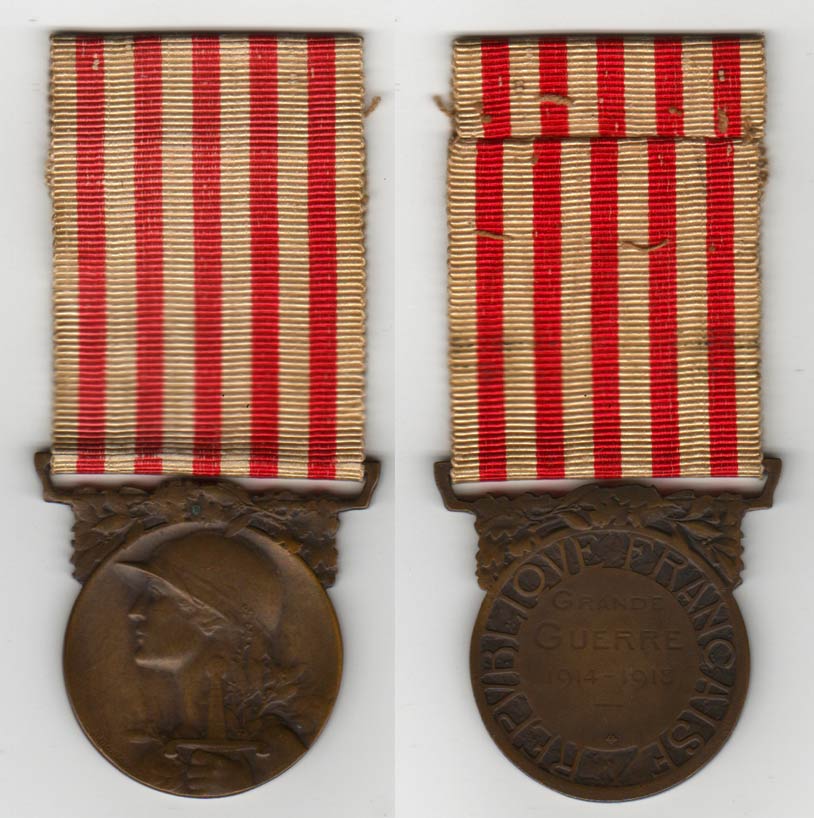 0
0 -
To all,
I have finally managed to obtain a specimen the same as that listed in posts #12-13. This example is characterised by a very large ball suspender, slightly different effigy and obverse inscription details and very narrow and flatter sword hilts that do not have the pronounced swirls on the ends. The large ball suspender suggests French manufacture but this is not conclusive.
When the item arrives in the mail I shall post pics.
Regards,
Rob
0 -
I would concur and agree with Tims post. It is good to see that there are fellow and like-minded collectors in the internet enabled space that are willing to share their information and musings to the benefit of all.
Regards,
Rob
0 -
Hi Rob,
You may be correct on the never-ending varieties of Belgian Fire Cross; just when I think I seen all the variations, up popped the type 2 with the sides like yours and not too long ago, we were introduced to that short-barreled type 1.
Overall though, I think the major varieties have been posted in that thread, as they seem to be the most often encountered. IMO, those versions probably make up 90-95% (or more) of the examples I have seen out there, be it single or mounted in groups.
So, my friend it appears you have one of the more rarer types IMO! You have an amazing collection Rob, would love to see all of it one day!

Tim
Hello Tim,
Thanks for the words on the collection. It is something of a work in progress... It is unlikely that all of my collection would be posted because it is not all in the one spot. I am also in the middle of cataloguing a whole section of the collection for insurance purposes. One area that I haven't posted a lot of examples of is in the vic award certificates. While I have a few of them most are quite large and won't fit onto the scanner and again most of them are not in one spot for collating. In particular the Belgian and Italian certificates, as well as some of the French certificates are far larger than a normal A4 or Letter sizes scanner so they will simply have to wait.
At some stage in the medium to long-term I will get around to calaloguing and scanning everything but other things and events will always manage to get in the way.
I am glad someone else enjoys these items as much as I and I am, where possible, always willing and happy to share information.
Regards,
Rob
0 -
Hi Rob,
Beautiful additions to the thread! You know, I never did find another Belgian Fire Cross like the one you have but, I did see a Type 2 that had several horizontal lines along the edge. Most have between 16-21 and the versions with more than that must be from one obscure maker.

Tim
Hello Tim,
Apart from that group of 3 with the Fire Cross I have no other similar examples. In fact, I hadn't really paid that much attention to the piece and was searching the general Belgian forum for something else when I spied the thread on the Fire Cross. Your postings of the myriad of varieties is what made me go back to my collection and have a closer look. I wouldn't be too surprised if it was found that there were many more varieties. I suppose the more you look, the more you find!
It is strange sometimes when we are looking for one thing and get side-tracked, in a fruitful and good way, into something completely different. It is this variety that I enjoy about the vic series.
Regards,
Rob
0 -
The Romanian mini bar is interesting, first comes the Romanian Order of the Crown (Civil / Peacetime) award, then an officers military service medal, however the inclusion of the 1877-78 Crossing of the Danube Cross, from the 1877-78 Independence War, might be a little mystifying to some who see the bar, it possibly denote an honorary award to an officer a son of an 1877 Romanian officer who had the original 1877 award, (however, the sons full size award would have born the "TRADITIE" clasp) the rest of the awards go on through the 1913 Balkan Campaign, WW1 period and include the 1930's era Peles Castle medal and the 100 Centenary of King Carol I medal.
Kevin in Deva.

Hello Kev,
You are indeed correct on the addition of the TRADITIA bar to the full-size 1877-78 Crossing of the Danube Cross. Tim B posted pics of this group, both full size and mini, on the victory medal thread. Here it is again for reference.
Regards,
Rob
 0
0 -
My question pertains mostly to the WW1 campaign medals.
Were there ever any official, double or inclusive dated clasps like the one pictured below? IF so, what medals were authorized to carry them?
But why were the clasps put on this ribbon? Could it indicate possible colonial service of some sorts?
Tim
Hello Tim,
Yes I have seen numerous single and double-dated bars. They are generally seen on the following two Italian war medals:
* Turkish War medal
* Libyan medal
There are no double-dated bars for the Italian War Commemorative Medal of 1915-1918 nor any bars to the vic.
While the Italian war with Turkey pre-dated the Great War, it is interwined with the subsequent Balkan Wars and Great War so these medals are generally included together for reference. They both have the same ribbon and obverse, carrying the effigy of King Vittorio Emanuele III. In that regard they would be difficult to tell apart on the uniform of an Italian veteran and are often confused without a perusal of the reverse.
The Turkish War medal was instituted by King Vittorio Emanuele III in November 1912 with the reverse bearing the inscription "GUERRA ITALO-TURCA 1911-12". The Libyan medal was also instituted by King Vittorio Emanuele III in September 1913. The reverse of the Libya Medal bears the same design as the Turkish War medal but with the plain inscription, "LIBIA".
As for the date bars on the ribbon; this was one of the few ways to distinguish the two medals.
There was a '1911-12' bar for the pre-war Turkish campaign (this was despite the dates on the reverse of the medal), and for the Libyan campaign you would see either a '1912' and/or '1913', or '1912-13' dated bars. Subsequent service in Libya post this period and into the Great War was recognised by a number of silver dated bars either singular or joined as per your example. This lasted well into the mid 1920's with some unofficial bars for Libyan service still being issued in the mid-to-late 1930s. I am not in Sydney at the moment so I do not have my Italian medal references nearby but when I am back I shall compile a list of known official and unofficial dated bars and post the results.
As for your example I would simply suggest that it is more likely than not to be a Libya medal with service after the major hostilities of 1912-13, followed by service while the Balkan Wars and Great War raged around. If you can have a look at the reverse I would check for the simple inscription 'LIBIA'. Of course it can't be discounted that these clasps have been placed on the Turkish War medal as well.
I have an unusual Italian group of 4 with a vic, war commemorative, and volunteers medal as well as post-war service in Libya in 1919-23. Many Italian troops were either committed to Albania or Libya at that time. The volunteers medal (Medaglia di Volontario di Guerra 1915-1918) indicated that the recipient was not a conscript.
Hope this is of use.
Regards,
Rob
0 -
And here is the last one from me in this group. An interesting Romanian group.
While these groups have been from the allied and associated powers it would be good to see some groups from the other side of the house as the thread indicates WW1 medal bars in general. It would be good if others could contribute their pieces to pile.
Regards,
Rob
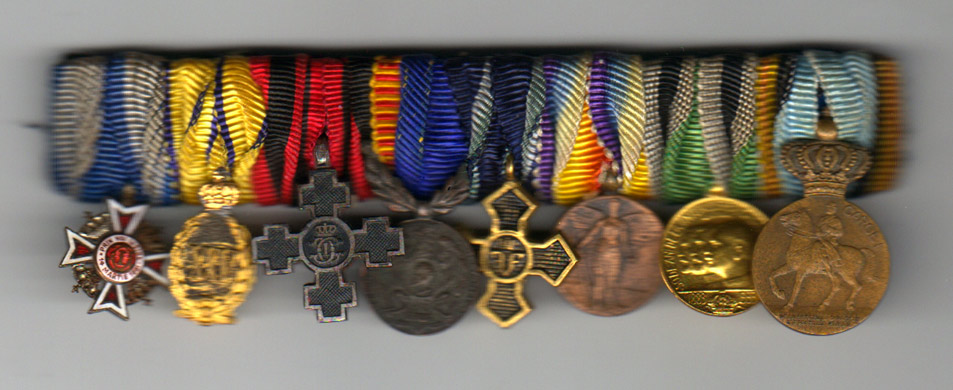 0
0 -
One of my nicer French mini groups showing service in Salonika and Serbia.
Regards,
Rob
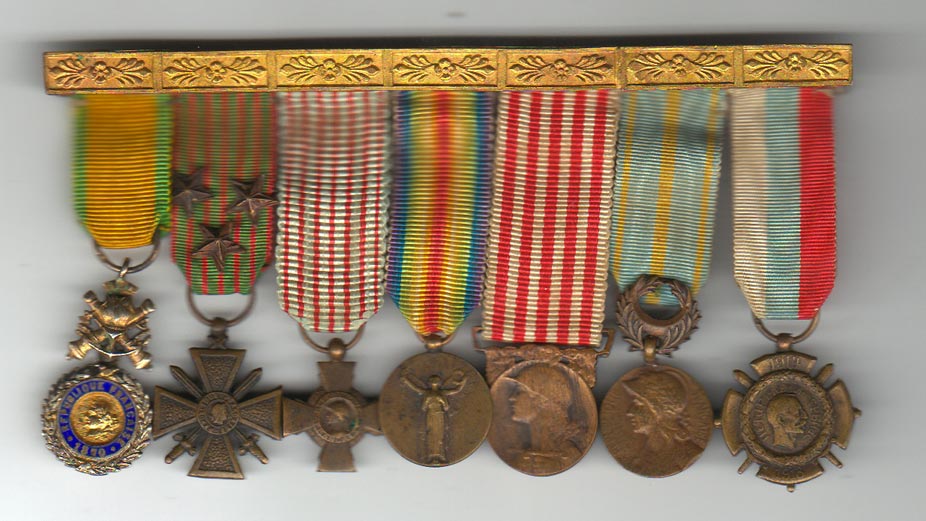 0
0 -
An interesting Belgian group indicating service in Africa.
Regards,
Rob
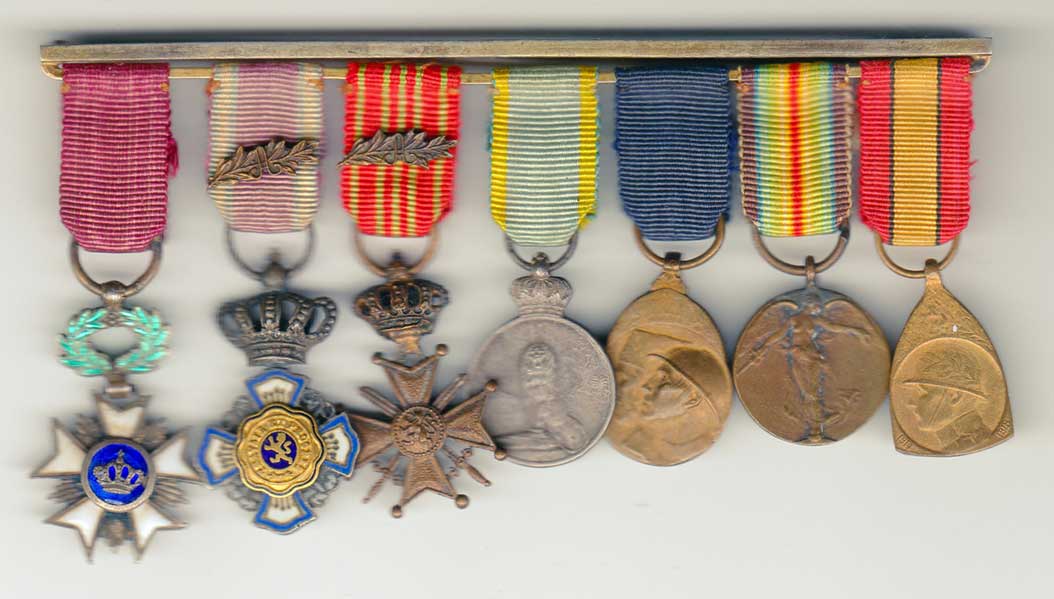 0
0 -
Here is a small Italian group of 4.
Regards,
Rob
 0
0 -
A much larger Great Britain group showing latter service indicated by the 1939 Defence Medal.
Regards,
Rob
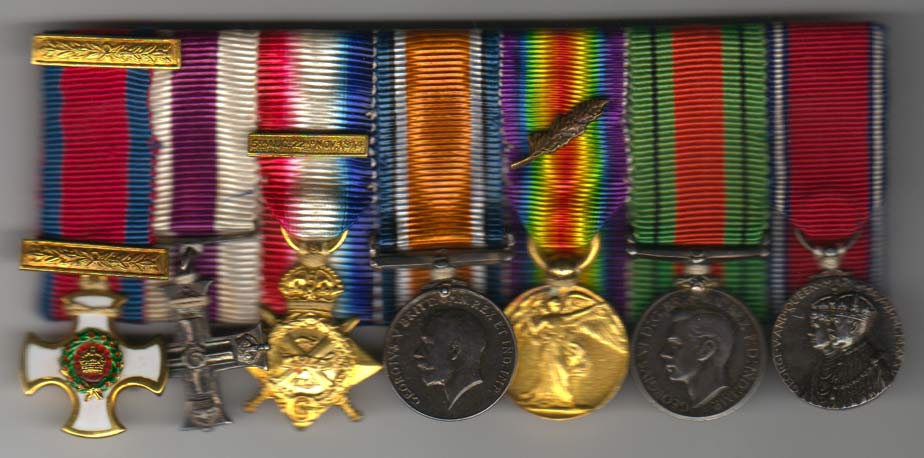 0
0 -
Here is the first of the mini's.
A nice small Great Britain group showing pre-war service in South Africa followed by a Great War trio.
Regards,
Rob
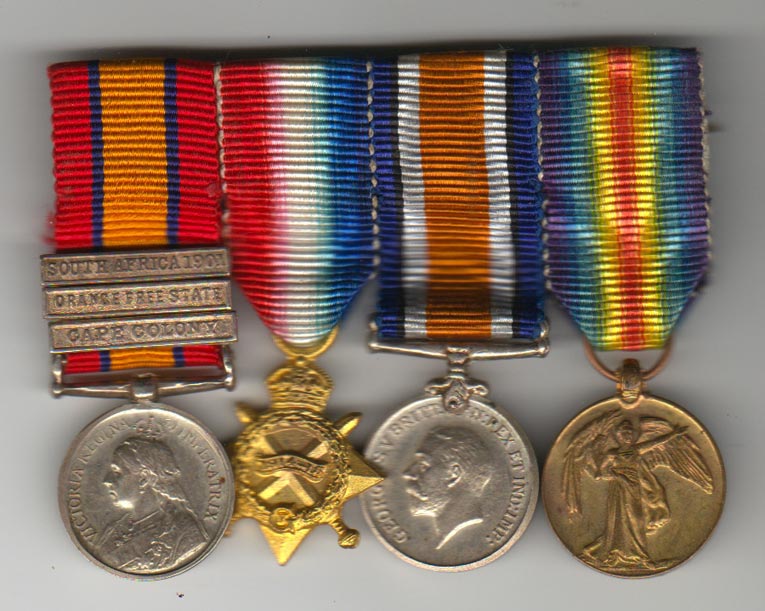 0
0 -
One of my favourite groups; a Greek group showing Great War service and post-war service in Asia Minor.
Some mini groups to follow.
Regards,
Rob
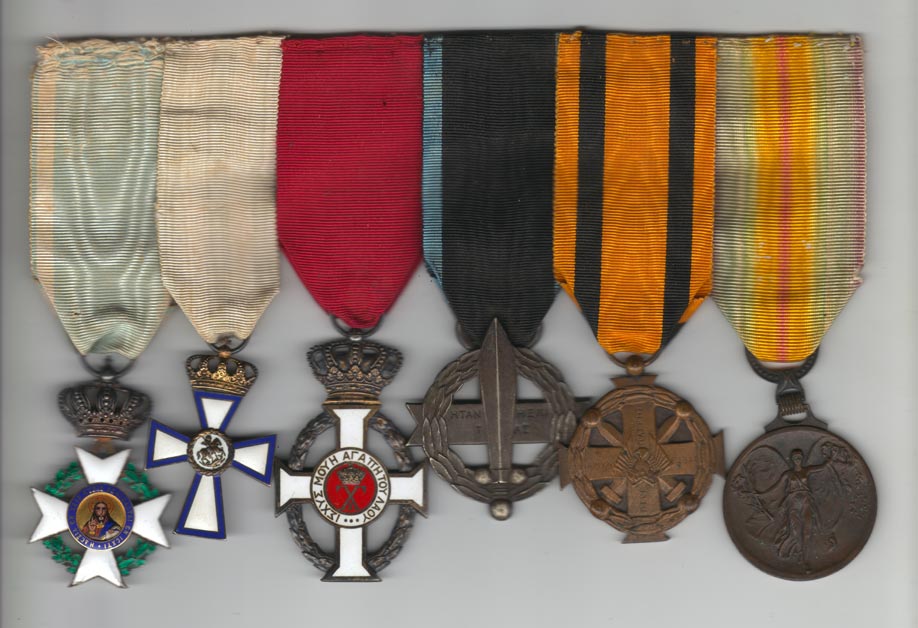 0
0




Italy - Commemorative Medal for the War of 1915-1918
in Southern European & Balkan States
Posted · Edited by RobW
To all,
Here is a variety produced by F.M. Lorioli-Castelli. The mark looks like a 'C' and an 'F' surrounding an 'M'.
Regards,
Rob